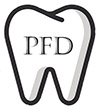Bonding (Cosmetic)
Bonding is a chairside dental procedure designed to repair and correct teeth that are chipped, decayed or discolored. The procedure can be typically completed in a single visit and is relatively less costly than other dental restorations such as veneers or crowns. In many cases, the treatment is used for cosmetic purposes to close the spacing between the teeth or improve the color or shape of the teeth.
Because of a superb aesthetic value and low cost, many patients choose to replace their amalgam fillings with composite resin which provides better appearance without compromising the functional properties of the restoration. Bonding is also used to cover exposed areas of the roots when the gums recede.
The Procedure
The treatment begins with choosing the correct shade of the composite material to be applied. Both the dentist and the patient evaluate available choices and determine the best selection. Below is an outline of the procedure.
- The surface of the tooth is abraded to roughen it. Etching solution is applied to prepare the tooth for the composite.
- Bonding agent is coated over the surface to help the bonding material to adhere.
- The composite resin is placed in small increments while the dentist is molding it into its proper shape. The material is hardened with a curing light.
- The dentist will sculpt, trim, shape and polish the material until the surface of the restoration is sheen and smooth.
- The occlusion is verified and adjusted as necessary.
Post-Operative Care At Home
Although the bonding material can be effectively used for many types of restorations, the resin is fabricated from porous components and is not meant to last a lifetime. Restorations of this type may have to be periodically replaced as they absorb staining and are more prone to wear and tear then porcelain materials.
In order to prolong the life of a composite filling, special care at home should be taken including frequent brushing, flossing and regular dental cleanings. Immediately after the procedure, the patient should abstain from consuming tooth-staining food and drinks. Some dietary habits may have to be adapted such as avoidance of excessive amounts of coffee, tea and smoking. Other detrimental habits, such as fingernail biting or ice chewing should be abandoned completely to prevent the restoration from cracking or becoming dislodged. The oral habits will play a major role in how long the composite will remain intact, and how often it will have to be replaced.

